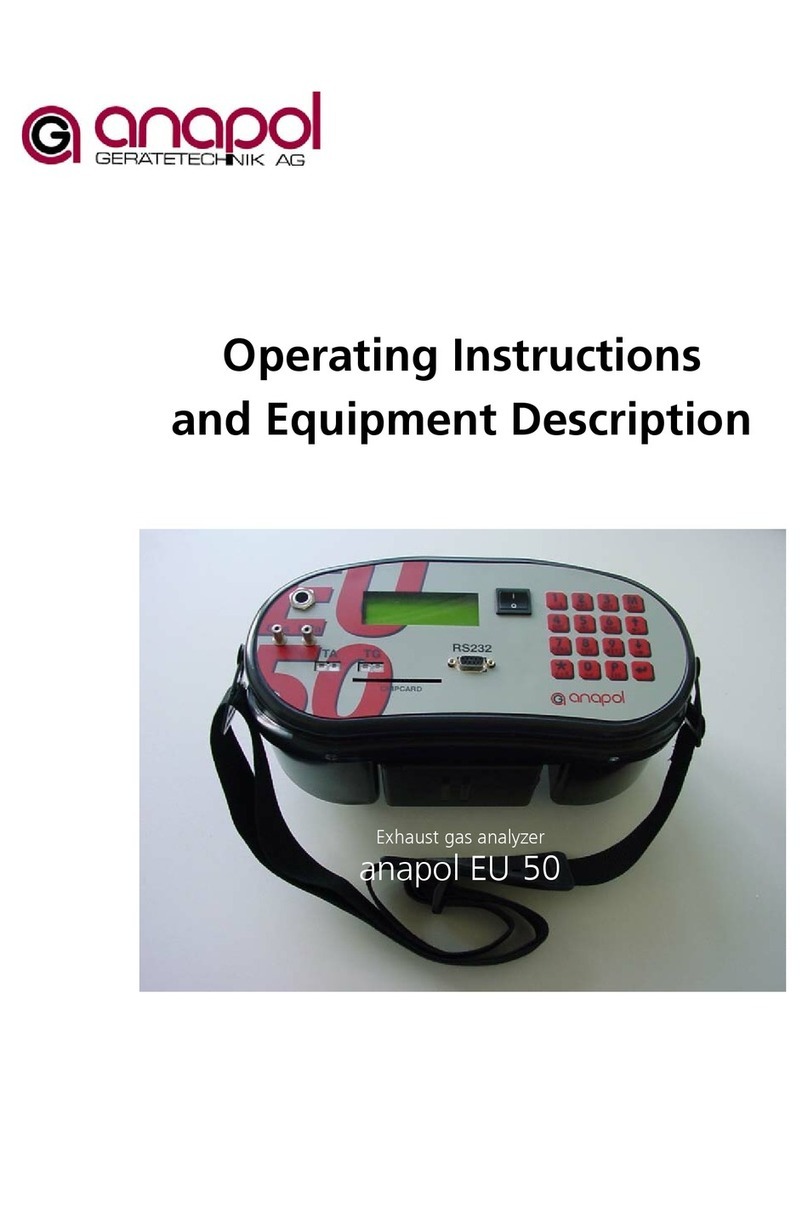Page 4
CONTENTS
1Introduction ...................................................................................................................................5
1.1 Application / intended use .......................................................................................................................... 5
1.2 Precautionary measures .............................................................................................................................. 5
1.3 Function...................................................................................................................................................... 5
1.4 Description of device................................................................................................................................... 6
2Operation ......................................................................................................................................7
2.1 Start-up ...................................................................................................................................................... 7
2.1.1 Procedure : ..............................................................................................................................................................7
2.1.2 Switching on the device...........................................................................................................................................7
2.2 Calibration.................................................................................................................................................. 9
2.3 Measuring ................................................................................................................................................ 10
2.4 Measuring the soot content ...................................................................................................................... 11
2.5 Printing ..................................................................................................................................................... 12
2.5.1 Printing the measuring results ................................................................................................................................12
2.5.2 Save measured results............................................................................................................................................ 14
2.5.3 Print options ..........................................................................................................................................................15
3Menu...........................................................................................................................................16
3.1 Draft (draft metering)................................................................................................................................ 16
3.2 Change paper and printer ribbon.............................................................................................................. 17
3.3 Diagnostics ............................................................................................................................................... 18
3.4 Language.................................................................................................................................................. 19
3.5 Communication ........................................................................................................................................ 19
3.5.1 Chip card...............................................................................................................................................................19
3.5.2 Communication.....................................................................................................................................................20
3.5.3 Save measured values ............................................................................................................................................20
3.6 Additional fuels......................................................................................................................................... 22
3.7 Address..................................................................................................................................................... 23
3.8 Settings..................................................................................................................................................... 24
3.9 Date + time............................................................................................................................................... 25
3.10 Information............................................................................................................................................... 25
4Text entry.....................................................................................................................................27
5Special functions ..........................................................................................................................28
6Customer data .............................................................................................................................29
7BUWAL measurement ..................................................................................................................30
8Batteries.......................................................................................................................................33
9Error messages.............................................................................................................................34
9.1 Error messages prior to calibration ............................................................................................................ 34
9.2 Error message during calibration............................................................................................................... 34
9.3 Error messages immediately after calibration............................................................................................. 35
9.4 Error message during measuring............................................................................................................... 35
9.5 Error messages when printing or saving a chip card .................................................................................. 36
9.6 Error message during soot metering ......................................................................................................... 36
10 Care and inspection .....................................................................................................................37
10.1 Actions carried out during regular inspection ............................................................................................ 39
10.2 EMC comformity....................................................................................................................................... 39
11 Appendix .....................................................................................................................................40
11.1 Specifications............................................................................................................................................ 40
11.2 Explanation of calculations........................................................................................................................ 43
11.2.1 Calculation NO2 + g................................................................................................................................................ 43
11.2.2 Calculation of gas losses qA................................................................................................................................... 43
11.2.3 Evaluation of qA-F measurements ...........................................................................................................................44
11.2.4 Error limits .............................................................................................................................................................44
11.3 Design versions ......................................................................................................................................... 45
12 Index............................................................................................................................................46




























